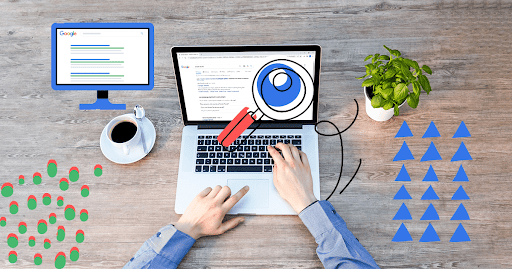On-page SEO is the art and science of refining individual web pages to rank higher in search engines and draw more relevant visitors. Unlike off-page SEO, which depends on factors outside your direct control (like backlinks or social signals), on-page efforts let you make tangible adjustments to everything within your website, be it headline structure, keyword placement, or image descriptions. Through methods such as optimizing tags, headers, and internal links, you can send clear signals to Google about the significance and intent of each page on your site.
Many organizations, regardless of size or industry, recognize that professional on page seo services can significantly streamline the optimization process. These services help ensure your site is both user-friendly and aligned with search engine best practices.
The Power of Little Tweaks: What Works?
The path to higher rankings isn’t always paved with massive redesigns. Often, it’s a series of careful, incremental adjustments that result in a real boost to your site’s search engine performance. For example, updating page titles with precise yet non-forced keywords can signal topic relevance to search engines without alienating your readers. Carefully crafting meta descriptions to both reflect content and entice clicks can raise your click-through rates from search pages, even if your overall ranking remains unchanged.
Headers matter greatly, too. Header tags (<h2>, <h3>, etc.) make your pages more skimmable for users while clarifying page hierarchy for search spiders. Another small but important tweak is the use of anchor text for internal and external links. It’s tempting to cram keywords into every anchor, but search engines recommend a descriptive, natural language approach that builds trust and avoids the penalties of “over-optimization.” By focusing on these micro-improvements, you create cumulative gains that can vault your pages above competitors who overlook the details.
Content Quality: Readers First, Algorithms Second
Today’s SEO winners understand that algorithms have evolved to favor helpful content that addresses users’ real needs. Creating content that directly answers pressing questions or solves reader pain points is far more effective than stuffing articles with repetitive keywords. Not only does this improve user experience, but it also keeps visitors on your site longer and encourages them to engage with more pages, the type of user behavior Google values.
The numbers support this perspective. Research featured in Marketing Statistics from HubSpot shows that high-quality, user-focused content leads to increased time spent on site and lower bounce rates. When you deliver information that is easy to read and actionable, you establish credibility and increase the likelihood of repeat visits and backlinks, two significant signals that can positively impact rankings. Even a handful of practical case studies or thoughtful tips can lift a page above generic, keyword-driven content.
Format and Structure: Making Content Scan-Friendly
Most people on the internet are skimmers. Eye-tracking studies reveal that readers scan headlines, bullet points, and bolded words far more than dense paragraphs of text. Structuring your website’s content for these habits improves the chances that users will find the answers they need and stay on your site longer.
Effective formatting starts with breaking up blocks of text into smaller, visually digestible paragraphs. Using headers to divide sections makes the page easier for both humans and search engines to navigate and categorize. Bulleted and numbered lists are ideal for summarizing information, like features, benefits, or steps, so that readers don’t have to comb through every line. Adding tables to compare products or summarize research helps distill complex ideas at a glance. Complement your written work with images or charts, always using accurate alt text to serve both accessibility needs and image search optimization. When you combine clear structure and thoughtful formatting, it’s easier to earn coveted spots in featured snippets or answer boxes in search results.
Technical Aspects: Speed, Mobile, and Core Web Vitals
Beyond words and structure, a website’s technical health shapes its ability to rank well and retain visitors. Speed is often underestimated; every second of extra load time can reduce conversions by up to 20%. That means your engaging content might go unseen if your site is slow. Both users and search engines now expect a seamless experience, especially on mobile devices, which currently account for more than half of global web traffic.
Google’s Core Web Vitals, a set of real-world, user-centered metrics, focuses on performance outcomes like load time, interactivity, and visual stability. If your site falters on these metrics, your SEO rankings could suffer. Simple steps, such as compressing images, enabling browser caching, and removing unnecessary code, can significantly improve page load times. Regularly testing your website using tools like PageSpeed Insights is essential for identifying bottlenecks and maintaining fast, responsive pages. By ensuring your site is quick and mobile-friendly, you create a solid technical foundation that helps amplify all your content efforts.
Common On-Page SEO Mistakes and How to Avoid Them
Even diligent marketers occasionally trip over classic on-page errors. Keyword stuffing, like cramming your target words everywhere, makes content unreadable and can trigger search penalties. Search engines have become remarkably good at recognizing when web pages sacrifice reader experience for keyword focus.
- Duplicate content: When similar or identical blocks of text appear on multiple URLs, search engines struggle to determine which page should rank first, often resulting in none of them performing well. This splits your credibility and dilutes your site’s authority.
- Neglecting image alt text: Failing to include alternative text for images can compromise accessibility for users with screen readers and limit your visibility in image search results, potentially missing out on an additional traffic stream.
- Overlooking internal links: Failing to link between relevant pages on your website can leave both users and search engines stranded, decreasing overall engagement and diminishing the “link equity” that aids SEO.
Performing regular content audits is crucial for identifying and rectifying these errors. Tools and checklists can help spot duplicate pages, assess keyword density, and ensure each image has a meaningful description, giving your website a reputation for quality and thoroughness.


